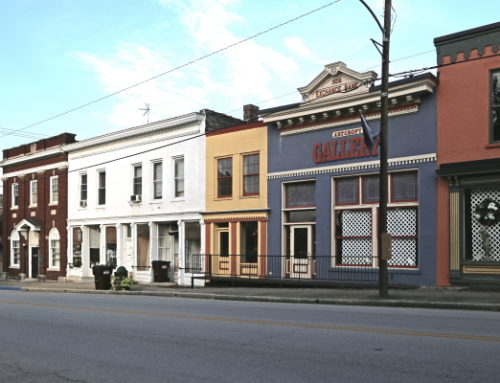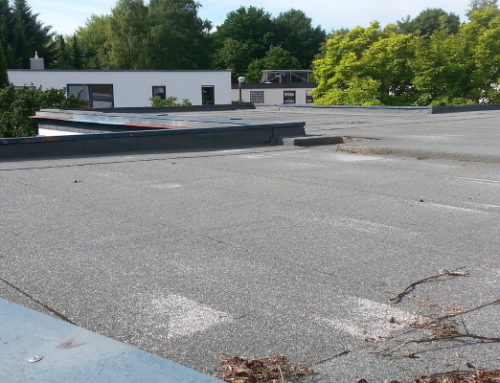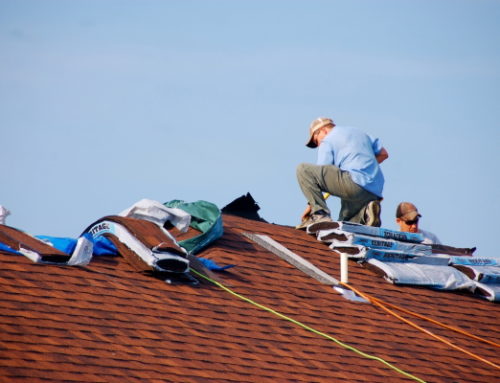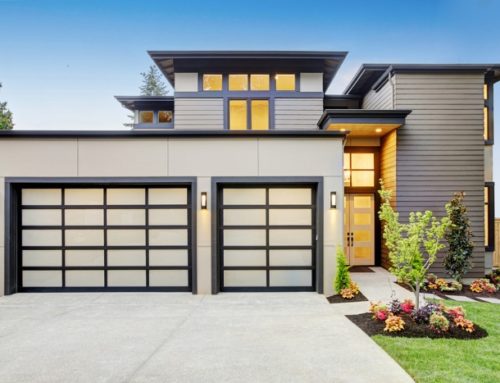Most commercial property owners and contractors prefer modern flat roof coverings for any project. True enough, these materials are effective against hail, rain, and snowstorms yet remain affordable and easy to maintain. However, they’ll require the expert installations of Clinton Township MI roofers with long-term experience in installing roofs.
However, given the heated summers and cold winters of St Clair Shores, property owners will want only the best flat roofing material. If you have yet to decide on which roofing material to use for your property, then after reading this post, you’ll know more about:
- Single Ply Membranes
- Tar and Gravel/Built-Up Roofing (BUR)
- Mastic Asphalt
- Asphalt Rolled Roof
- Modified Bitumen
- Green Roofs
Single-Ply Membranes
These materials are the staples of commercial flat roof systems.
In addition, manufacturers make these flat roof coverings in an artificial manner. For example, they make rubber or EPDM flat roof from recycled tires and other rubber materials. Then, they reinforce them with sawdust and slate dust.
Next, manufacturers distribute single-ply membranes in tightly-bound rolls in batches because most roofs require multiple rolls to cover the entire roof. In addition, each roof requires overlaps to create a watertight seal that prevents any possible leakage.
However, rubber roofs are only one of the single-ply membranes you can use for your property. Here are some more of them.
EPDM
As we mentioned earlier, ethylene propylene diene monomer (EPDM) flat roof coverings uses recycled rubber, slate, and sawdust. Manufacturers mix these materials. Then, they flatten the dried substance and roll them into flat sheets centimeters high.
Many trustworthy roofing contractors and property owners find EPDM roofs a practical flat roofing solution because it is affordable. In fact, it only costs $0.4 per square foot. If you do the math, you’ll spend about $400 on an EPDM roof square.
However, EPDM complies with ASTM standards requiring all EPDM roofs to withstand hailstorms and provide adequate protection for properties with a lifespan of 20-30 years.
TPO
Thermoplastic polyolefin (TPO) is the next-generation EPDM. However, these flat roof coverings become more expensive than EPDM due to its upgrades.
Manufacturers use an EPDM base to produce TPO. However, instead of diene, sawdust and slate dust, manufacturers use talc, cabon filler, and fiberglass to reinforce the material. Therefore, TPO has a stronger resistance and durability if you compare them with EPDM roofs.
However, it costs about $5-$6 per square foot of a TPO roof and it has the same lifespan as EPDM roofs. Contrarily, it has a brighter color (being white than the flat black color of EPDM) and better UV reflective capabilities than EPDM roofs.
Related: The Outstanding Advantages of TPO Roofs
PVC
Polyvinyl chloride (PVC) is the same material that pipe manufacturers use in their products. True enough, as flat roof coverings, they perform extremely well.
Contractors consider PVC flat roof coverings as the strongest of all single-ply roofing membranes. In addition, it comes in different colors to complement the aesthetic of the commercial property.
An individual PVC flat roof can withstand multiple hailstorms. In addition, it can carry heavy equipment. PVC roofs have the capacity to carry up to 300 pounds per inch (PPI), which means it can house heavy material stacking or multiple rows of split-type inverter HVACs
Despite its strength, PVC still has a limited lifespan of 20-35 years. However, it also has the highest flat roof materials prices at $8-$10 per square foot.
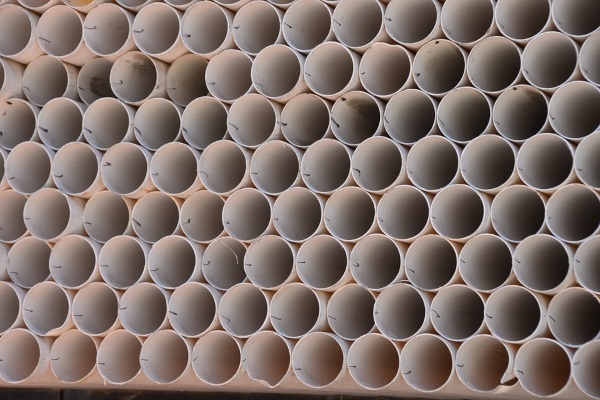
While it uses the same PVC material, PVC single-ply roof membranes have additives that make it enduring and have a longer lifespan against environmental hazards.
Tar and Gravel (BUR)
Using tar and gravel to cake and design sandwiched waterproofing materials to function as flat roof coverings is the traditional way to go about flat roofing. In fact, almost any commercial flat roofer has experience making built-up roofing.
These waterproof materials are thick layers of roofing felt, tarpaulin, and in some cases fiberglass membranes. Then, contractors will use tar to cake them together and create an airtight seal. Despite its strength and capacity, BUR roofs are quite affordable with a $2-$7 cost per square foot.
However, the smell of tar will induce nausea and headaches. This may prompt some property owners to evacuate tenants or anyone living in the property until the smell disappears.
BUR roofs last for 40-50 years.
Mastic Asphalt
If you can find a St Clair Shores roofing contractor with mastic asphalt installation qualifications, then don’t miss out on having the strongest of all flat roof coverings. True enough, mastic asphalt can be expensive because of the special equipment and materials for flat roofs construction. However, your investment guarantees a 50-plus year lifespan for your roof.
In addition, mastic asphalt roofs can withstand multiple hailstorms and is a precursor for commercial property rooftop parks or bars. Most hotels use this roofing material to build rooftop decks and swimming pools too.
Asphalt Rolled Roof
Aside from EPDM, asphalt rolled roofing is another affordable roofing material for St Clair Shores property owners. A square foot of roofing felt or asphalt rolled roof costs about $1-$2, which brings a square to about $1,000-$2,000.
However, mineral felt roofs have a very short lifespan of 15-25 years. Therefore, EPDM roofs are a better investment option than asphalt rolled roof membranes.
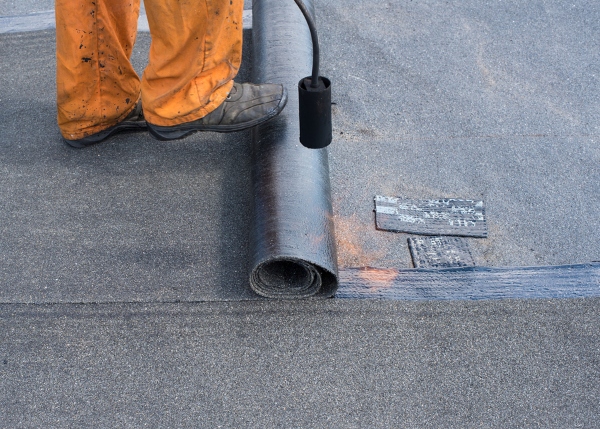
The installation of torch down modified bitumen roofs must done by a licensed, insured, and certified roofing contractor.
Modified Bitumen
This roofing material is a cross between built-up roofing and asphalt rolled flat roof coverings. Manufacturers use multiple sheets of waterproofing material. Then, they cake them together with mineral, asphalt, and strong fillers such as talc. Lastly, they distribute these materials in huge rolls.
Unlike tar and gravel roofs, contractors need not to use tar to install a modified bitumen flat roof. Instead, they will use a heat-welder or torch to melt the material to the roof itself. The melting process guarantees an airtight seal that prevents leaks.
Modified bitumen roofs can last for 30-40 years.
Green Roofs
These flat roof coverings are the most aesthetically pleasing of all. Most contractors recommend having a mastic asphalt, concrete slab, or waterproof felt base before installing green roofs.
The usual installation process of green roofs involves the creation of the mastic asphalt or concrete slab base. Then, they will install layers of waterproof felt while constructing the downspouts where soil moisture will travel. Lastly, they will fill the gaps with soil and finally plant the seeds of foliage and vegetation to grow in the gardens.
Therefore, you can estimate that green roofs are extremely expensive and laborious to construct. On the contrary, you will receive great local tax incentives as well as a truly pleasing and beautiful commercial roof.
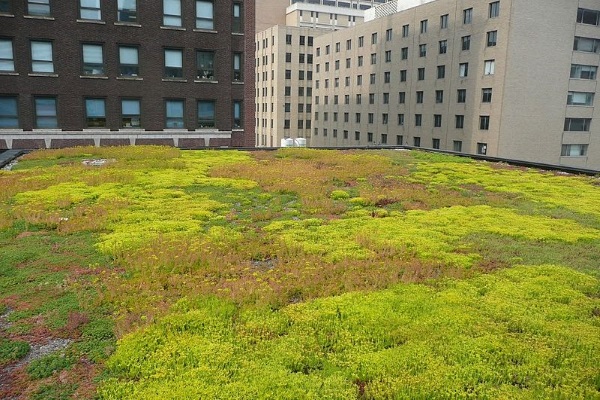
Commercial green rofs can have a simple look such as this. If you have the resources, you can make green roofs turn into a leisurely garden.
Wrapping Up
Commercial properties need only the best flat roof coverings. Therefore, using any of these materials will suit their needs.
However, be mindful that some long-lasting roofing materials make better investments than short-term but affordable flat roof coverings. In addition, make sure to work only with trusted roofing contractors to maximize the lifespan and durability of your roofing materials.
In case you haven’t found the best one yet, you can place your trust with Miller’s Home Improvement. We are a commercial and residential roofing contractor with over 30 years of experience installing EPDM, TPO, and modified bitumen roofs. Call us today for all your roofing needs!



